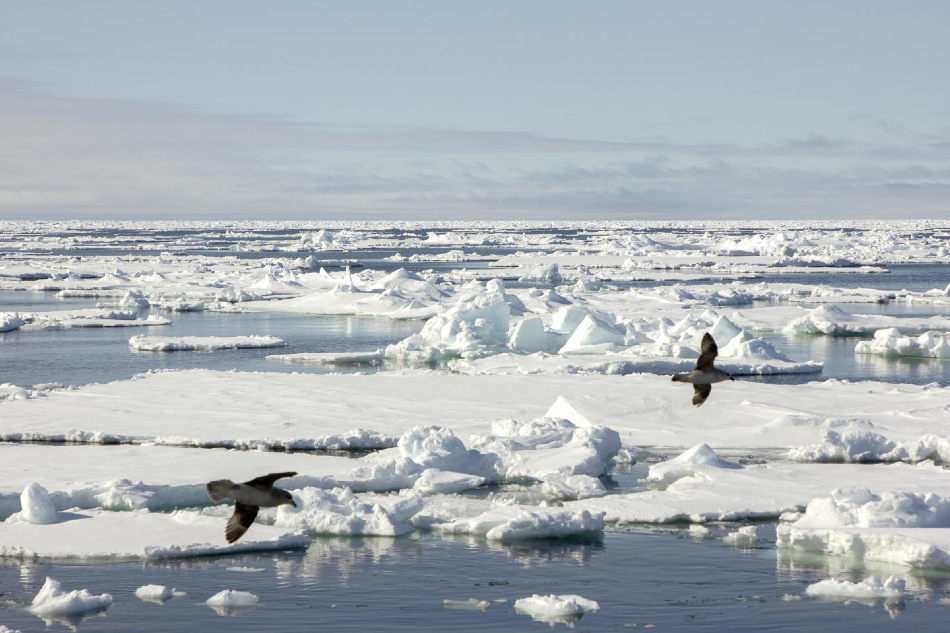Jun 19 2020
Maintaining control of the spread of sea ice is crucial for vessels that voyage into the polar seas. Huge resources are used to gather data and identify future developments to offer reliable sea ice warnings.
 Sea ice in the polar sea. Image Credit: Jørn Berger-Nyvoll, UiT.
Sea ice in the polar sea. Image Credit: Jørn Berger-Nyvoll, UiT.
As of now, large resources are needed to create these ice warnings, and most of them are made by The Norwegian Meteorological Institute and similar centres.
Sindre Markus Fritzner, Doctoral Research Fellow, UiT The Arctic University of Norway
Affiliated with the Department of Physics and Technology, Fritzner recently submitted a doctoral thesis that analyzes the option of employing artificial intelligence to make ice warnings better, faster, and more accessible.
In Need of Supercomputers
The ice warnings used at present are based on dynamic computer models fed with satellite observations of the ice cover, as well as available updated data related to snow depth and ice thickness. This produces substantial amounts of data, which must subsequently be processed using robust supercomputers to offer calculations.
“Dynamic models are physical models and require a lot of data to be processed. If you are going to make warnings about future events, you need to use a supercomputer,” explained Fritzner.
Since this is an expensive and limited resource, the warnings are impossible without access to the ideal resources.
Artificial intelligence renders calculations accessible on a standard laptop. Fritzner has analyzed how artificial intelligence can be employed on a standard laptop.
In the area of artificial intelligence, machine learning is a specialized field that involves using statistical methods to enable computers to find coherences and patterns in huge datasets. Rather than being programmed, the machine learns, and it all boils down to developing algorithms that allow computers to learn from and perform calculations, using empirical data.
In Fritzner’s study, for instance, data was loaded in to observe how a particular week will unfold, as well as data for how it will appear a week later.
“Thus, it is the coherence in the development between these weeks that the machines learn itself, and in this way it can predict how it evolves,” noted Fritzner.
If such an algorithm is fully developed, its demand for computing power would be far less compared to the conventional physical model.
“If you use artificial intelligence and have a fully trained model, you can run such a calculation on a regular laptop,” added Fritzner.
Every Vessel can Make Calculations on Their Own
This opens the door for various fields of usage, one among which is highly accurate weather reports in The High North. Fritzner also emphasizes that this algorithm can be employed by the shipping industry operating close to the marginal ice zone, noting that this is a form of traffic that will only increase.
“One example is cruise traffic, where it will be very important for the cruise vessels to know where the ice is, and where it will move in the next couple of days,” stated Fritzner.
In the current state, it is not possible to run high-resolution models on the vessel. They must contact The Norwegian Meteorological Institute, which must then run the model on a supercomputer before the data can be transmitted back to the vessel.
If you are on a vessel in The Barents Sea, you are dependent on being connected to a network to download the warnings from The Norwegian Meteorological Institute. If equipped with the right program and artificial intelligence, this can be done from the vessel itself, with nearly no computing power required at all.
Sindre Markus Fritzner, Doctoral Research Fellow, UiT The Arctic University of Norway
More Development Needed
The study so far seems encouraging, but the results are still not so good as the conventional technique. However, with the evolution of artificial intelligence/machine learning gaining full momentum, Fritzner has no doubts about its potential.
The experiences so far are good, but not perfect. What I observed when comparing machine learning and the traditional physical models was that they were much faster, and as long as the changes in the ice were small, the machine learning functioned quite well. When the changes were greater, with a lot of melting, the models struggled more than the physical models.
Sindre Markus Fritzner, Doctoral Research Fellow, UiT The Arctic University of Norway
He brings attention to the difficulty of the models that run on artificial intelligence relying only on historical data, while the physical models are constantly modified to adapt to large geophysical changes such as increased melting and rapid changes to the weather.
In the experiments, Fritzner made use of data such as temperature, sea temperature, and concentration of sea ice. He hopes to enhance the precision by adding more data to the model such that it has a larger dataset for the warnings it offers.
“Especially if you add wind and ice thickness, the machine learning will work much better,” he added.
He hopes that with further research and development, the great potential underlying this form of machine learning can be unraveled.